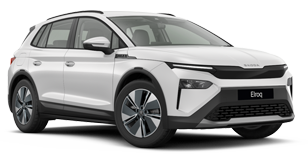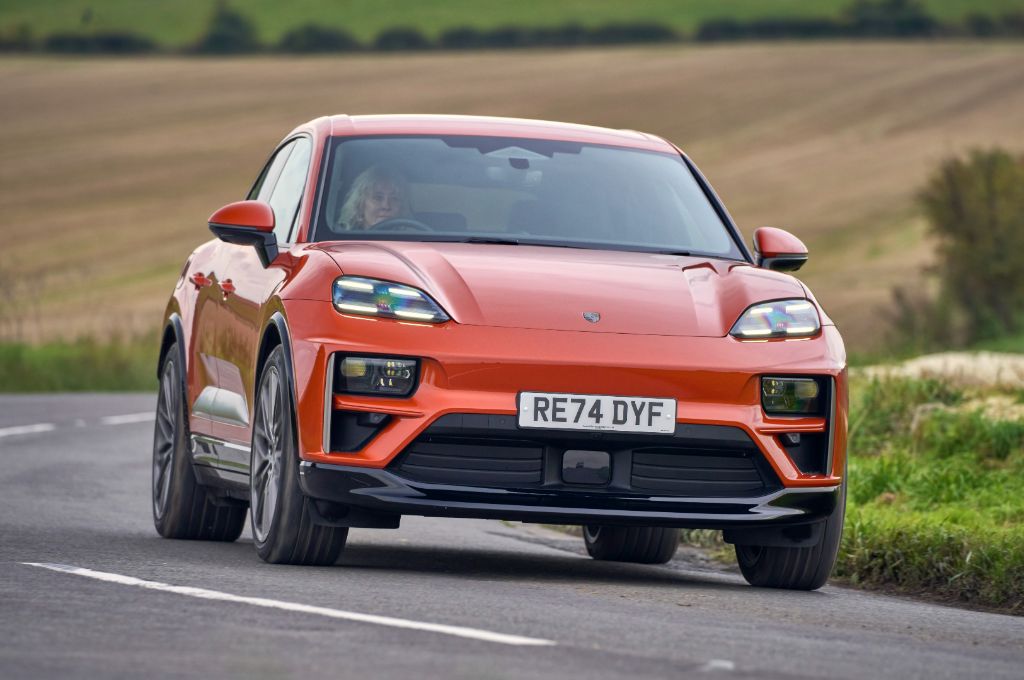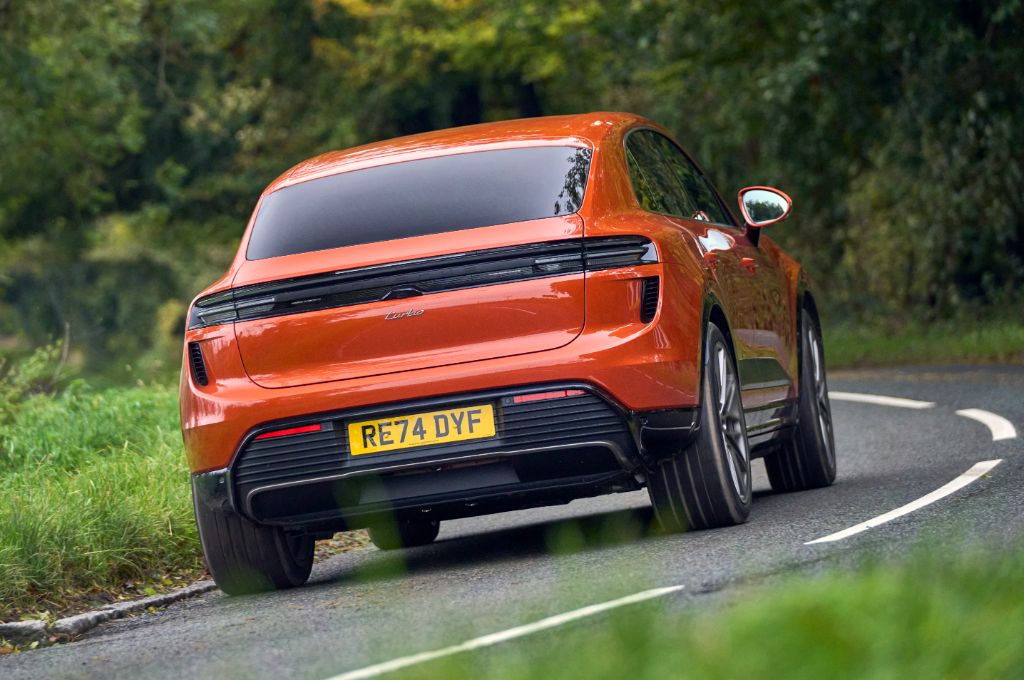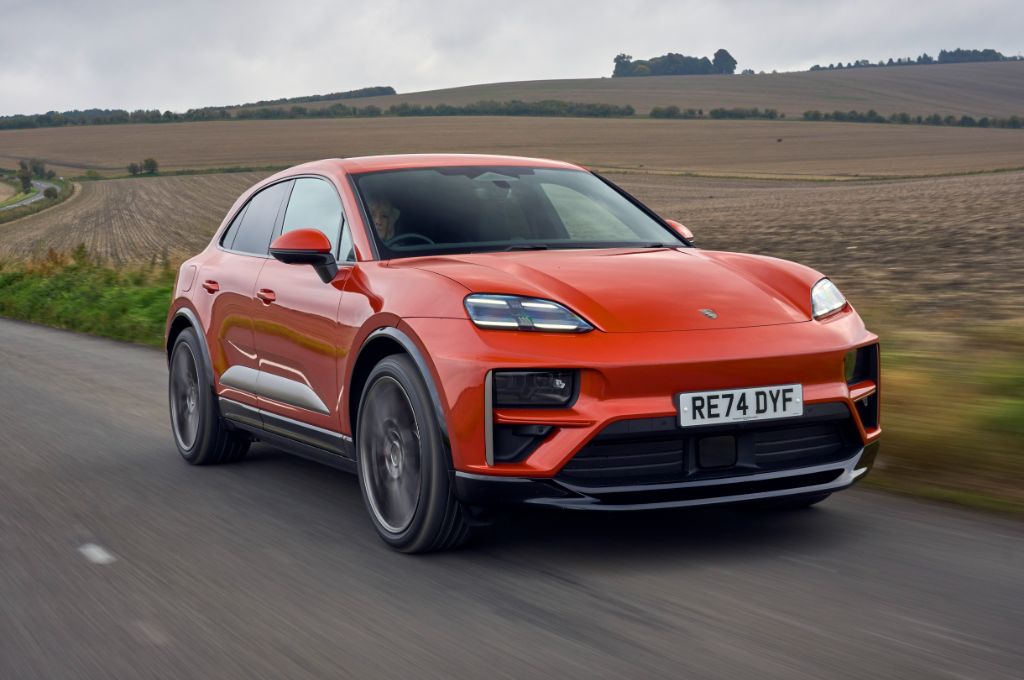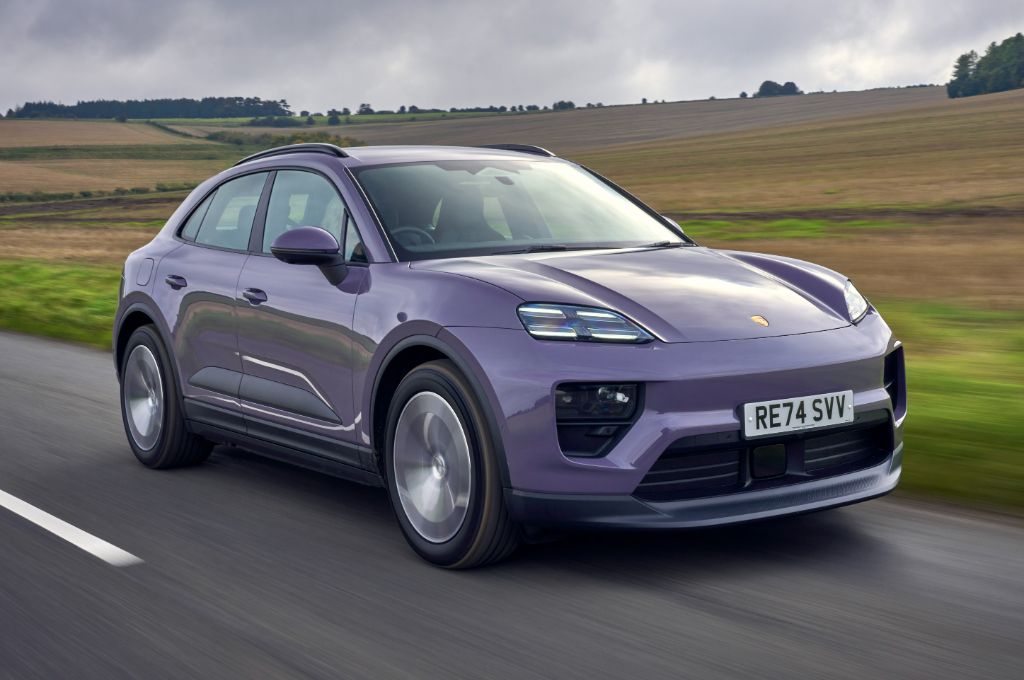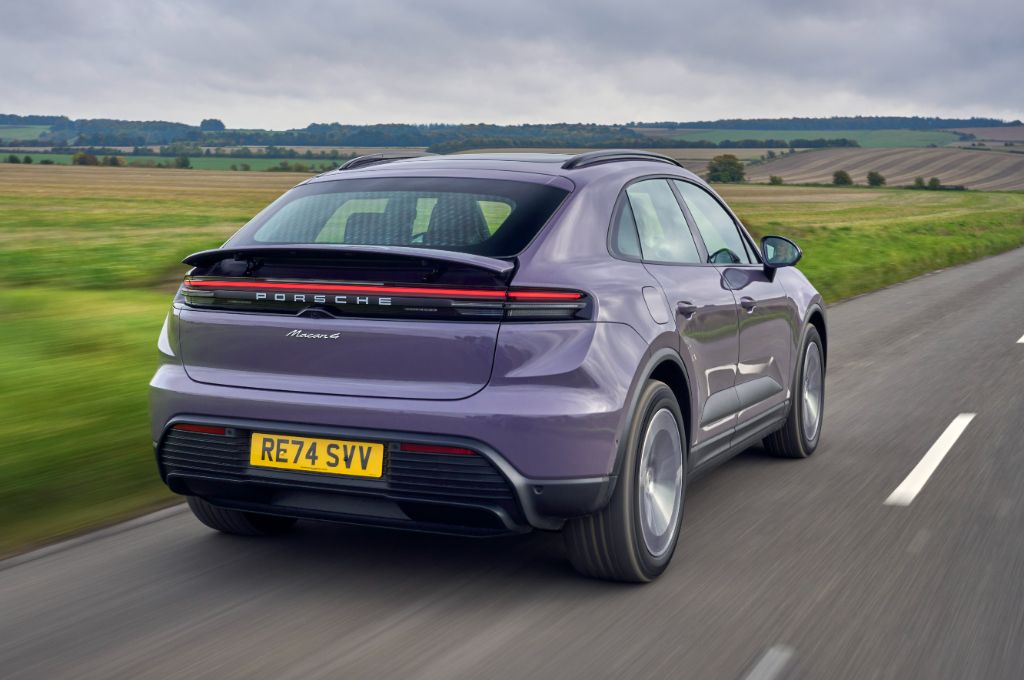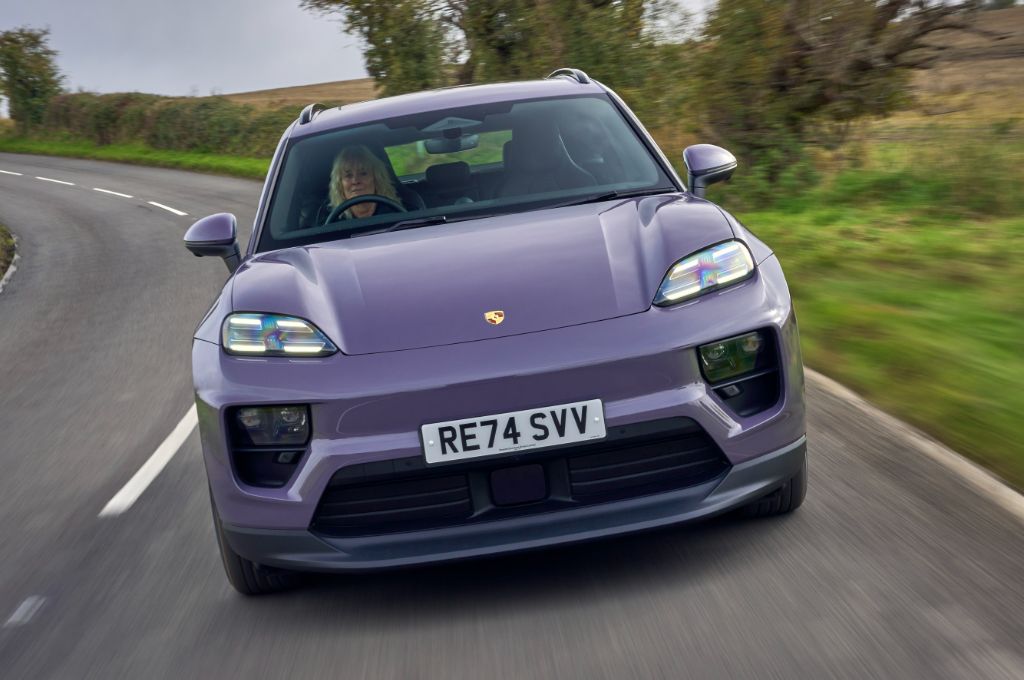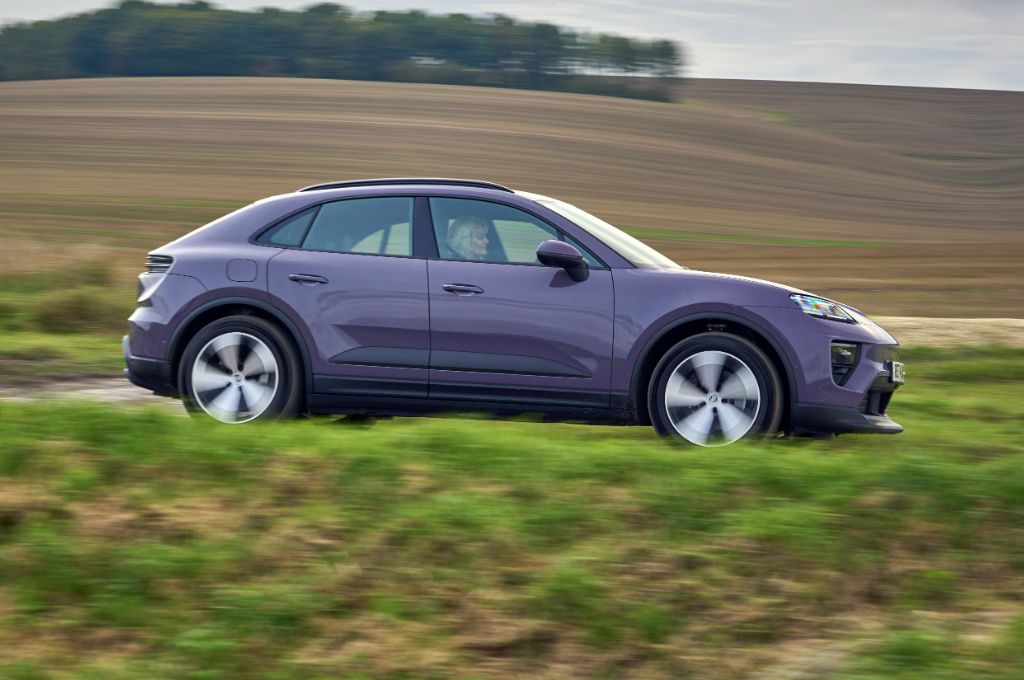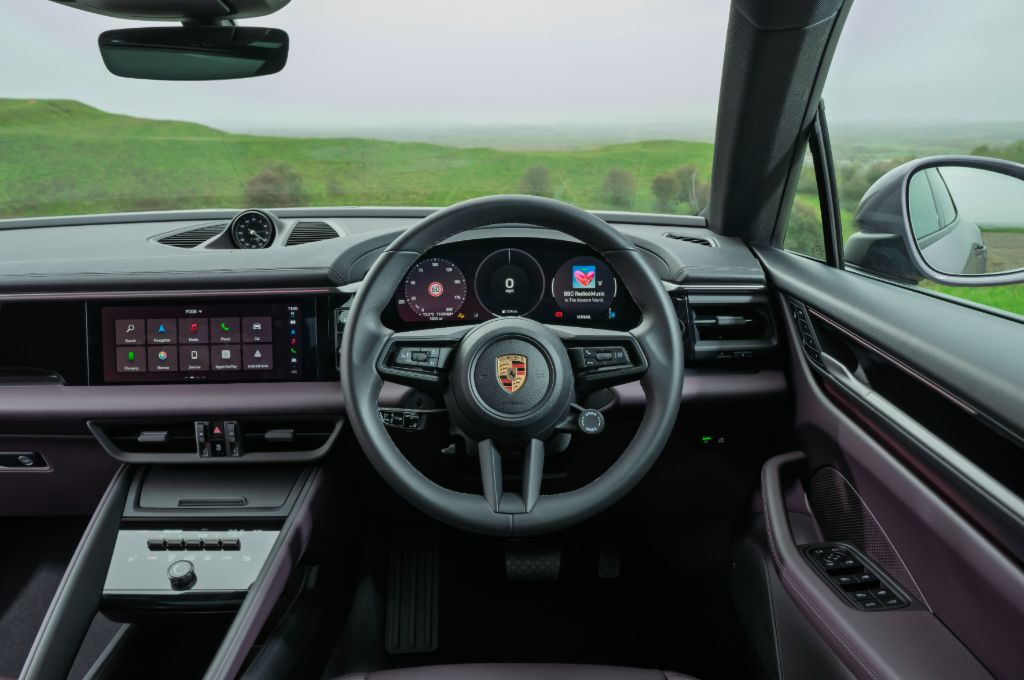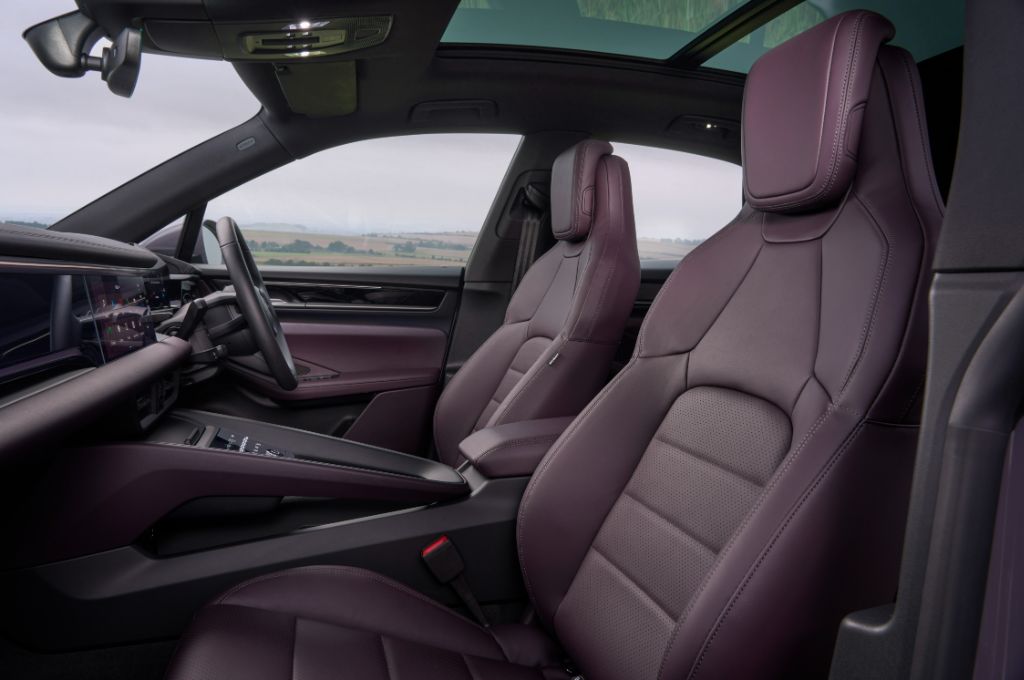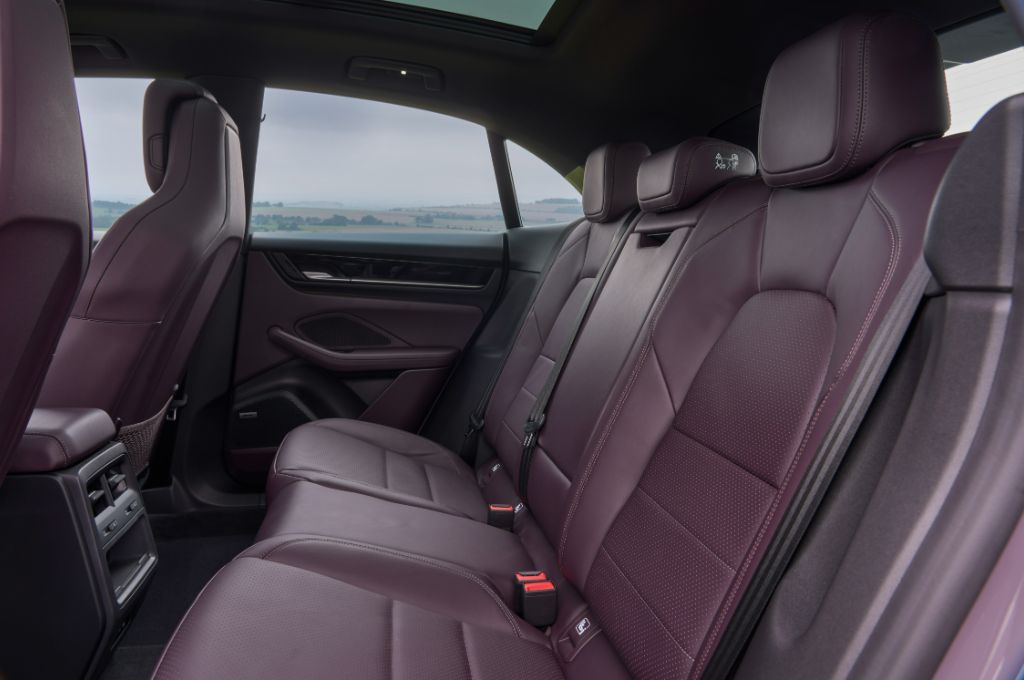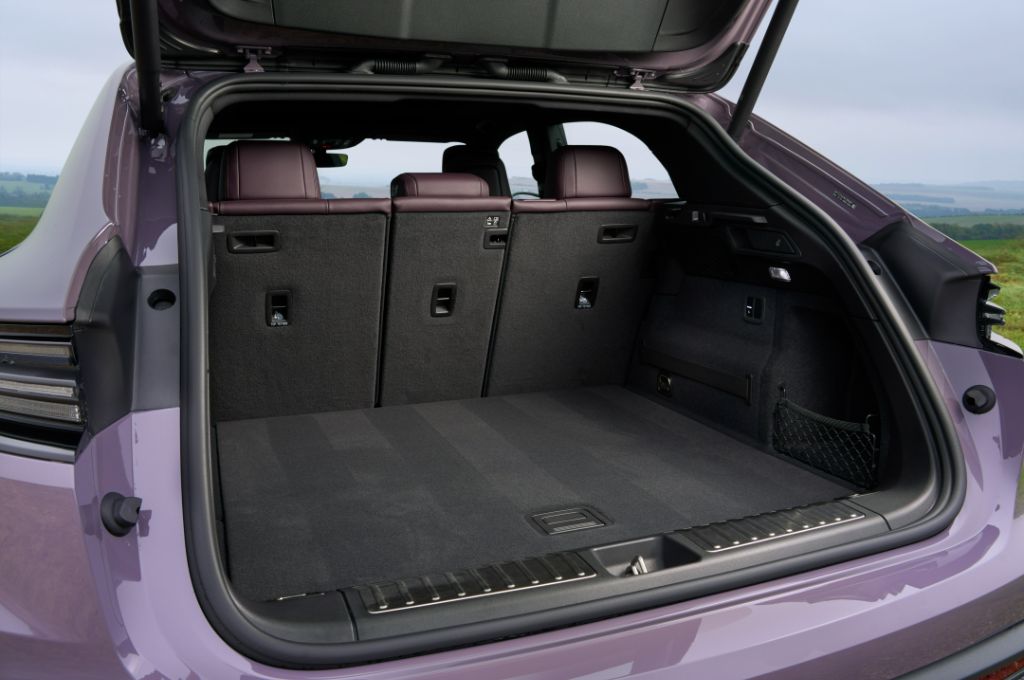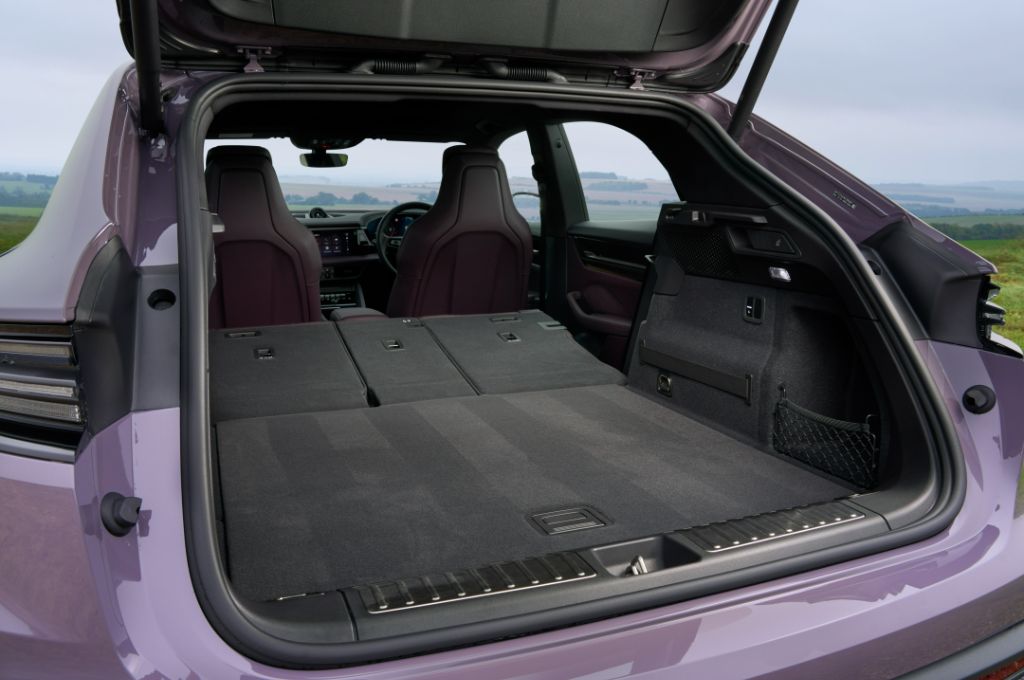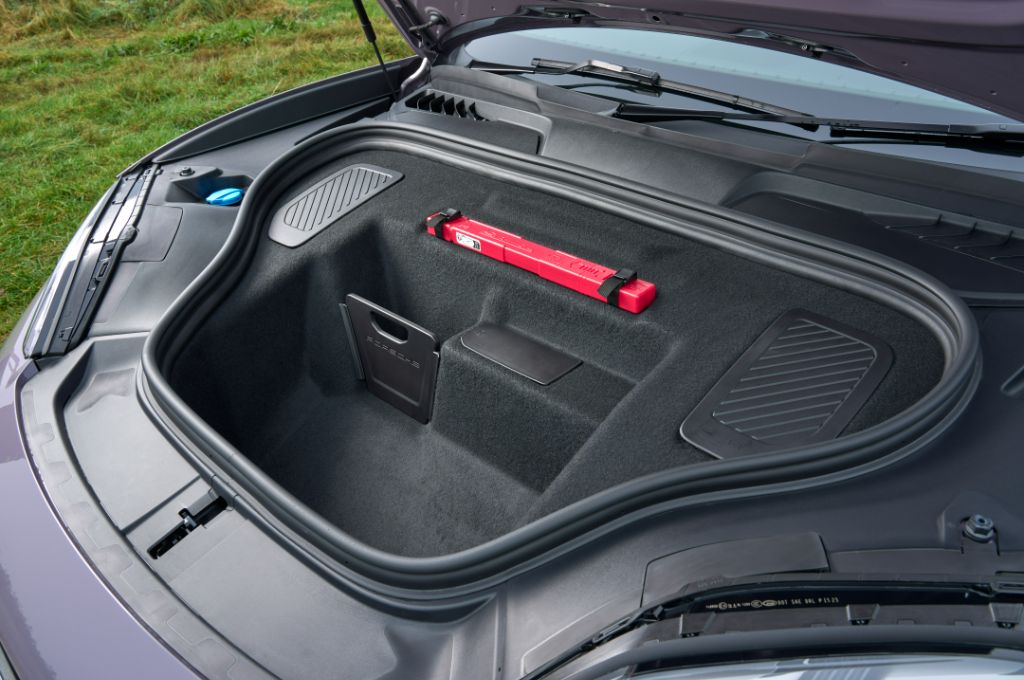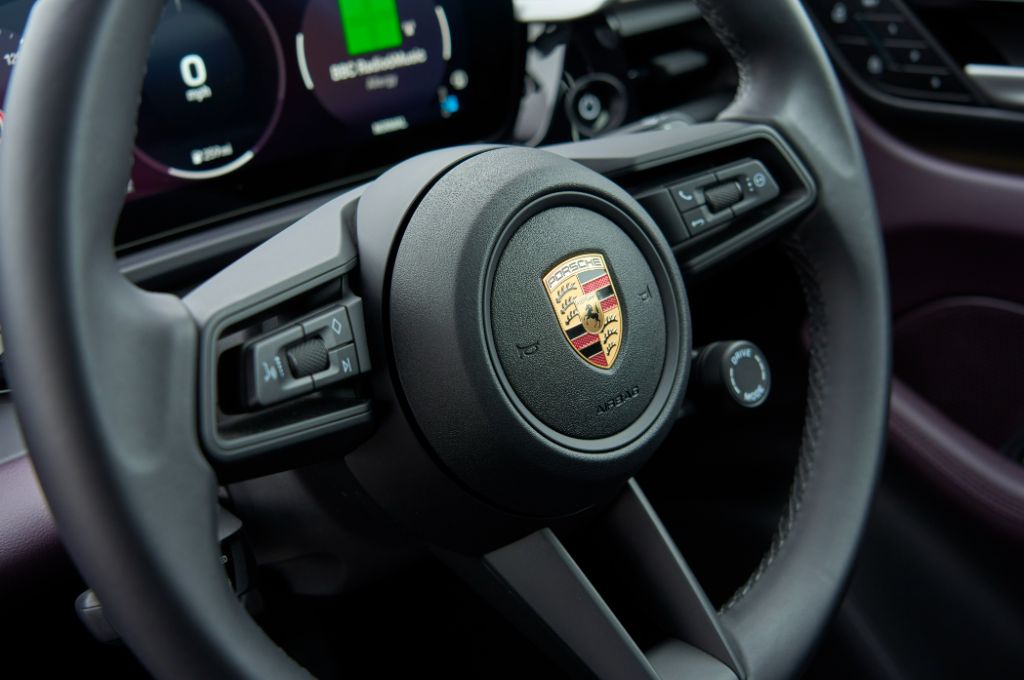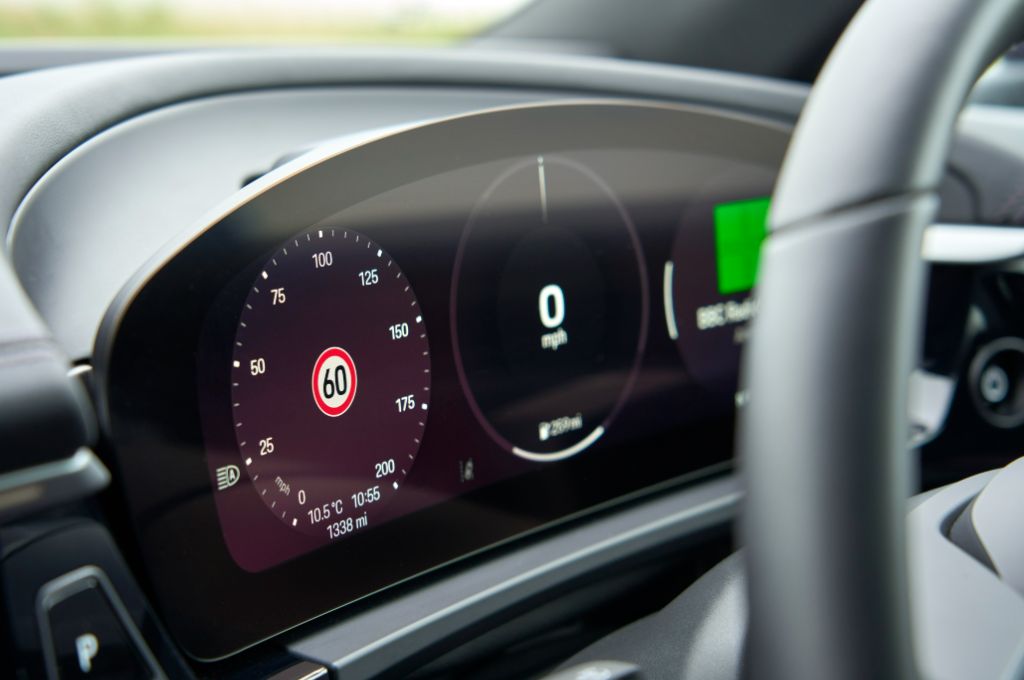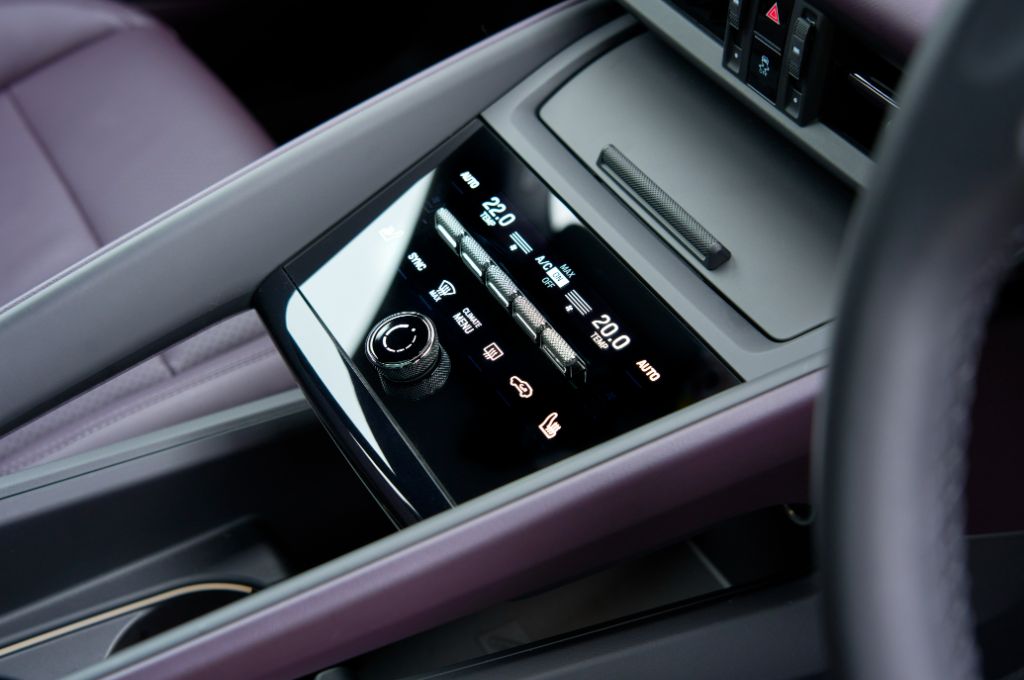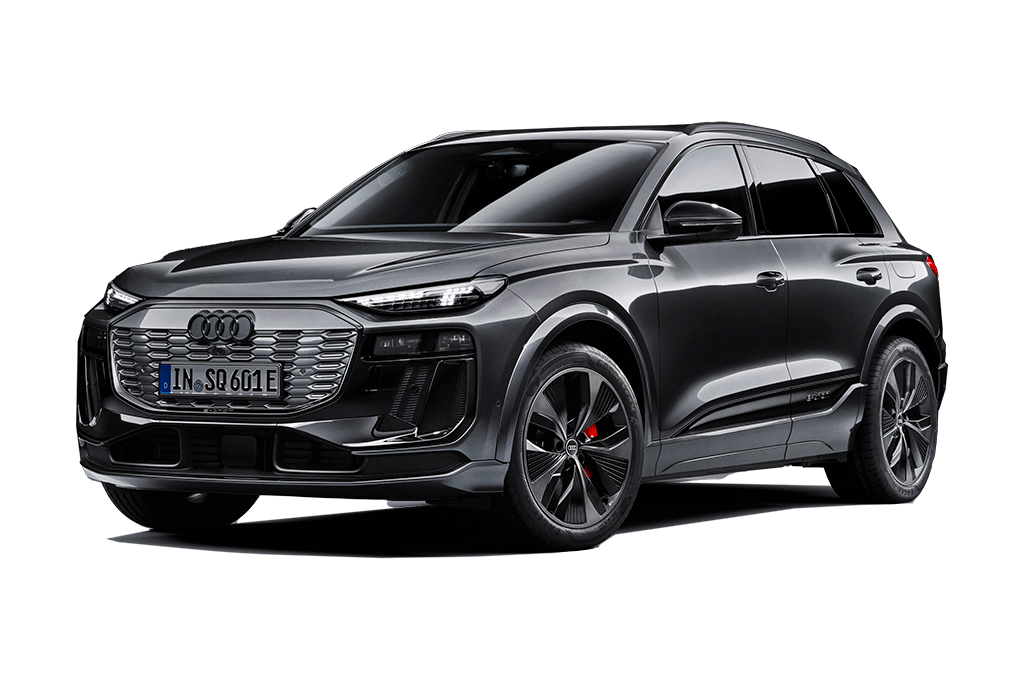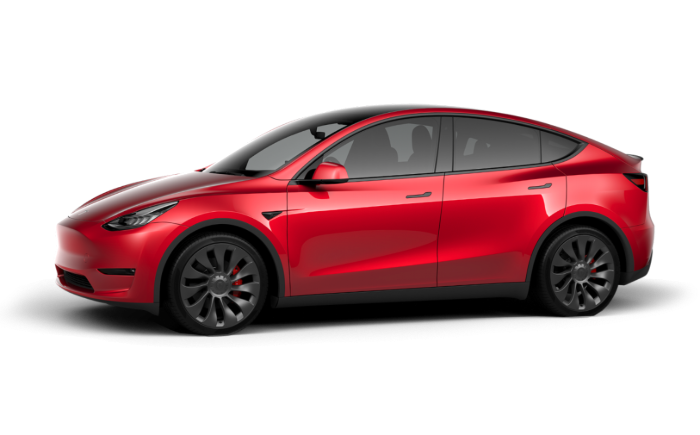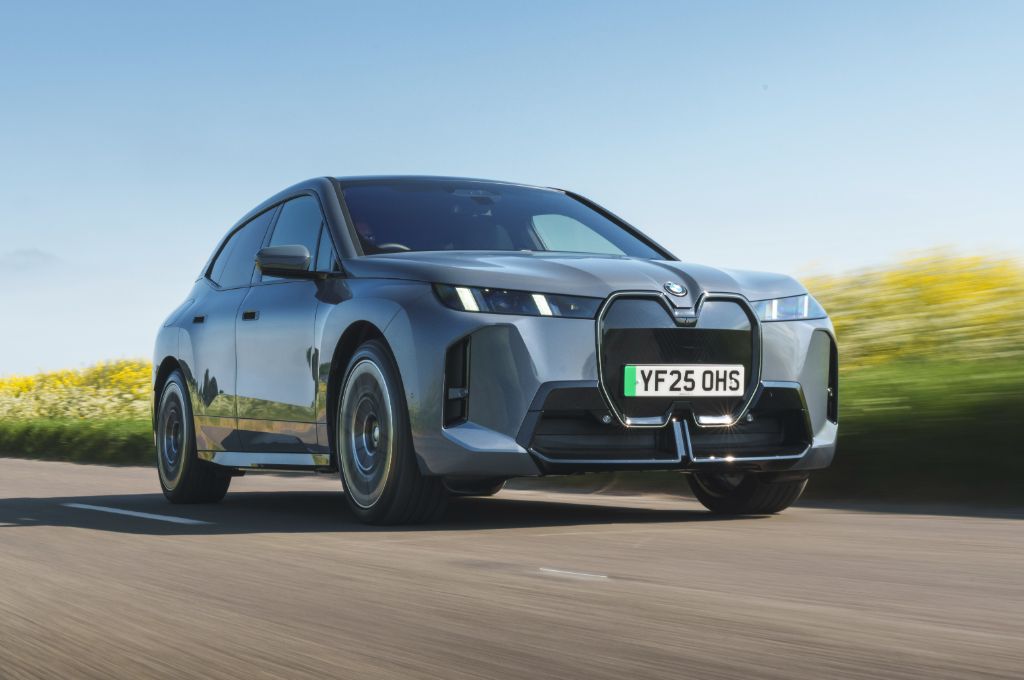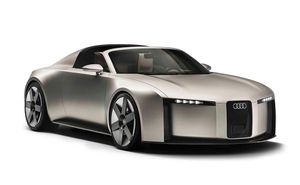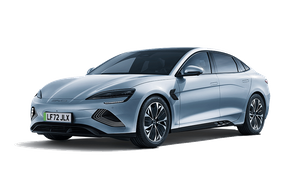Welcome to one of the most important electric SUVs on the market. Not because of its affordability, but because the Macan Electric represents a more mainstream electric Porsche than you get with the Taycan, which we all know is utterly brilliant but quite an exclusive proposition.
Having said that, the Macan is hardly cheap; it starts at just under £69,000 for the base, 335bhp, rear-wheel drive Macan model that manages the longest claimed WLTP range of 399 miles. Mind you, most Macan buyers will at least go for the Macan 4, which steps it up to just over £71,000 but obviously gets all-wheel drive, and a range of up to 381 miles from the 95kWh battery that powers all of the electric Porsche Macan models, despite a very hearty 402bhp output 0-62mph time of 5.2sec. There's also the electric Macan 4S, which costs around £77,000 for a 4.1sec sprint time, and a range of 378 miles. The Porsche Macan Electric Turbo takes things to a whole other level, with a supercar-rivalling 3.3 second headline performance figure, lots more standard equipment and a teeth-sucking price tag of nearly £100,000.
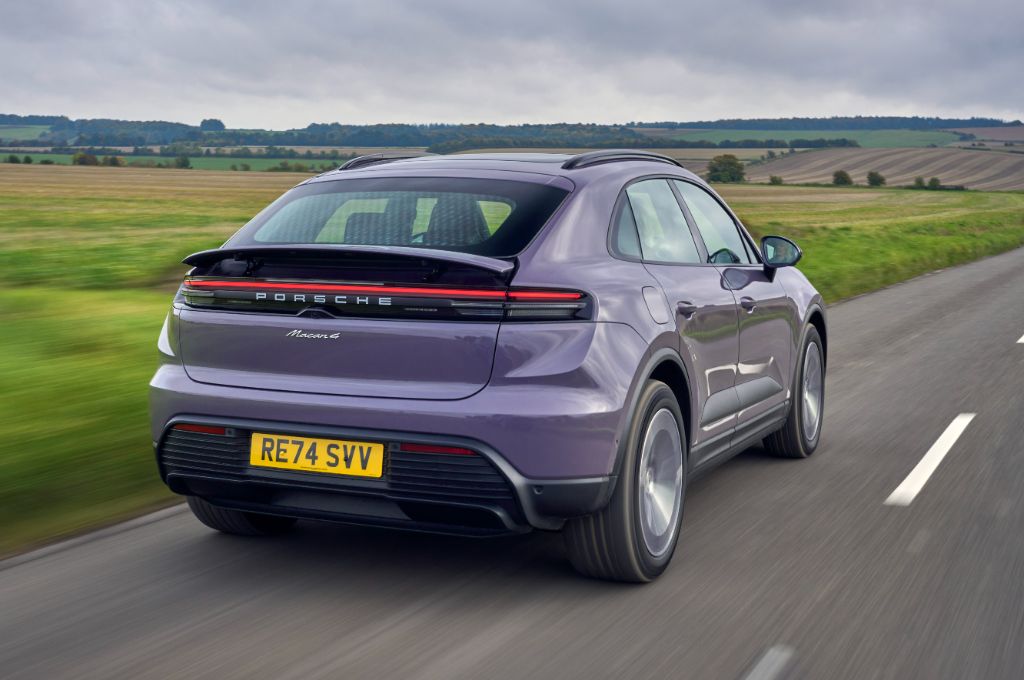
Underneath the Macan Electric is the same Premium Platform Electric as you find lurking beneath the new Audi Q6 e-tron, while other rivals will include the BMW iX3, Tesla Model Y and Mercedes EQE SUV. You will also still be able to buy the outgoing petrol Porsche Macan for a few years yet.
It’s certainly an evolutionary look for the new Macan, when it comes to styling - and that’s no bad thing in our books. Standard colours are black or white, but there’s some 59 shades to choose from if you’re willing to pay, including a rather fetching shade of pastel lilac called ‘Provence’. Oui, Oui!
Range, Battery and Charging
The entry-level, single motor Porsche Macan Electric gets an official WLTP range of up to 399 miles from its 95kWh (usable capacity) lithium-ion battery, while at the other end of the Macan spectrum, the Turbo Electric manages 367 miles. As for real-world range? We spent most of our time in the Macan 4, which we'd estimate will manage around 260- to 340 miles depending on conditions.
Check out the used electric vehicles for sale on Electrifying.com
Recharging is super-rapid, as the Macan gets an 800V system just like the Taycan. That means that it can charge at up to 270kW which, in real terms, means that you can get around 60 miles of range per 4 minutes of charging at one of the 350kW ultra-rapid chargers that are increasingly common on the UK’s motorway network. Put another way, in ideal conditions that’s a 10-80% top-up in some 20 minutes.
There’s also vehicle-to-load charging, so that you can charge your electrical gubbins from the car’s battery. Useful for keeping the fridge going on camping trips, and that kind of thing.
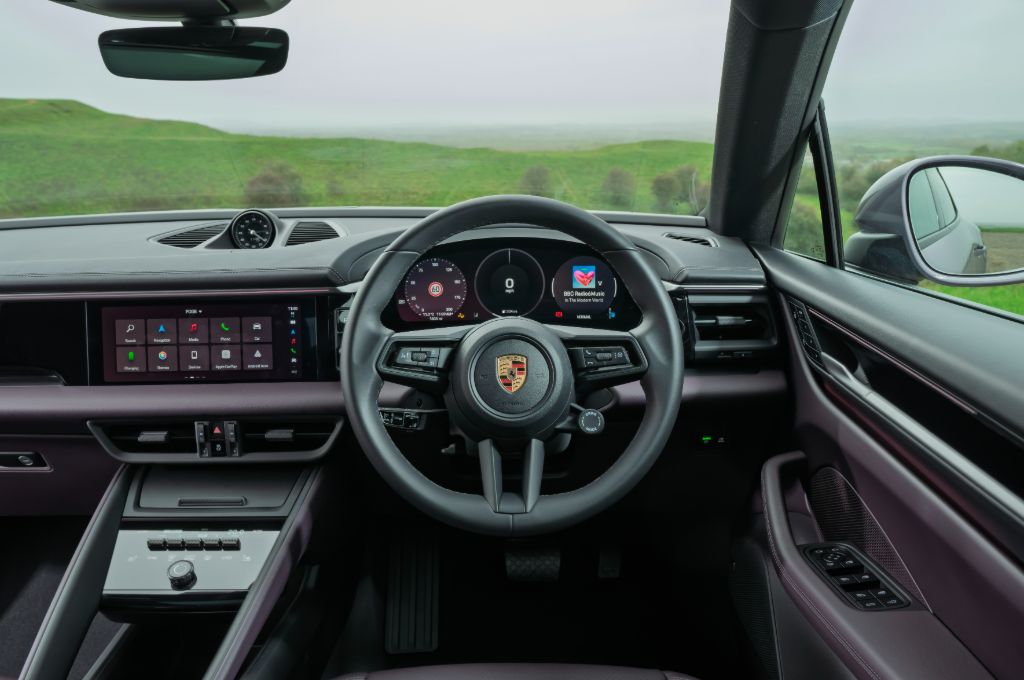
Motors, Performance and Handling
Suffice to say that the Macan is just as peachy to drive as you expect it to be. While the lack of a one-pedal drive mode is annoying, the brake regen' does bleed in nicely and the brake pedal feel is really brilliant - confident and easy to modulate, whether you're on a fun country road or just pottering through town. Everything else lives up to expectations, too. Power delivery is actually more muted than you might expect in the standard drive modes, but stick it in Sport Plus and you can suddenly feel how potent the Macan 4 is (never mind the crazily fast Turbo that Nicki drove out in France!).
Having said that, the Macan isn't difficult to drive even in Sport Plus, and it’s pretty wieldy and well sorted for about-town driving or a motorway cruise – especially with the standard adaptive air suspension that’s standard on the Turbo, or optional on any mode other than the rear-wheel drive Macan. You can also add rear-wheel steering, which tightens up the turning circle and improves high-speed cornering, and we’d add it if you’re going to be wheeling around multi-storey car parks on a routine basis, as it definitely helps with that sort of manoeuvring.
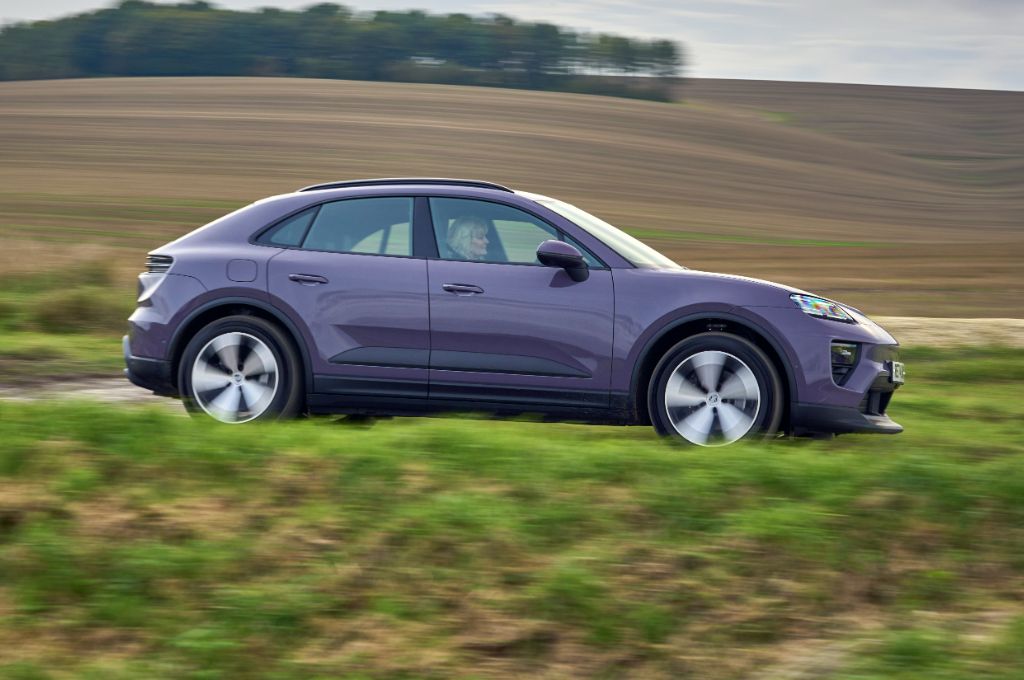
Otherwise, the balance of responsiveness, comfort and that ‘just so’ ease of progress that Porsche does so well, makes the Macan every bit as lovely to drive as the petrol Porsche SUVs. In fact, the power delivery and the way the car responds – especially in its routine drive modes – make it feel very similar to a petrol Porsche, so this is likely to please anyone who’s considering a Macan for their first electric car.
You’ll have to look to a used Porche Taycan to get any electric car that handles better, at this price.
Practicality and Boot Space
The Macan is, of course, the practical family Porsche, so this new electric model must live up to the expectations of the family motorist and their dog, too. Thankfully, the 480-litre boot is big enough for the Labrador, and the rear seats fold in a 40/20/40 split. There’s also a huge ‘frunk’ storage area in the nose of the car, which offers 84-litres of space for storing all of your charging cables.
There’s also plenty of space in the rear seats, and the swoopy roof doesn’t cut too much into the headroom, so a couple of taller adults will be happy in the back.
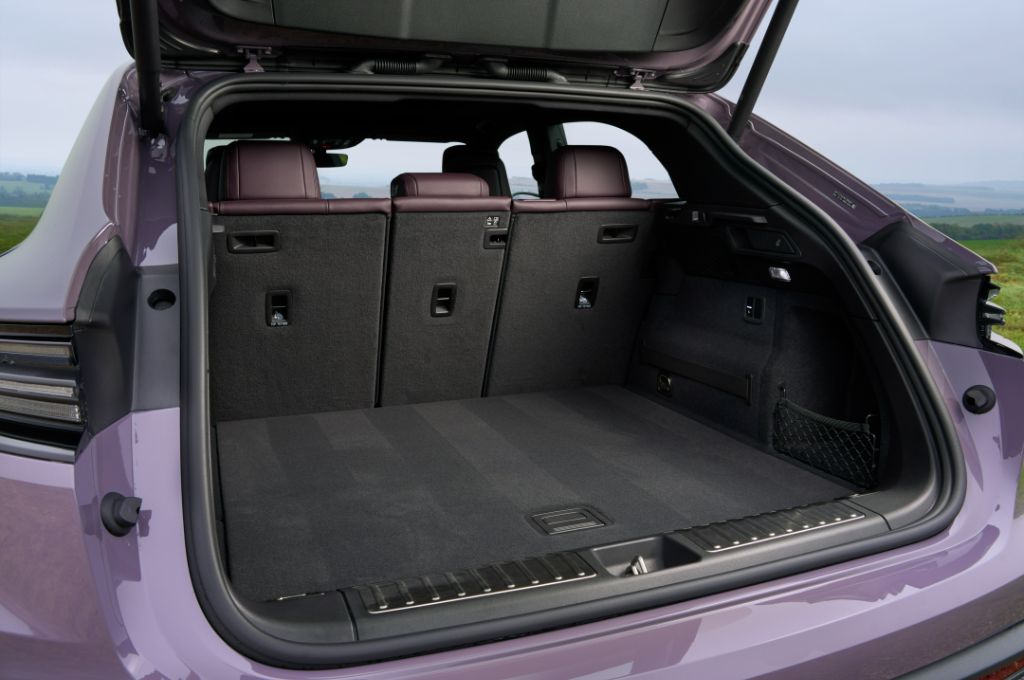
Interior, Design and Technology
Up front, the dash has the pin-sharp looks that Porsche seems to make its own, complete with simple, horizontal lines and a blend of materials that all feel tactile and appropriately plush and expensive. It’s a super-comfy place to be, with great seat adjustment, even if visibility to the rear three-quarters is a bit iffy.
Naturally, there’s an abundance of screen to play with, but we really like the way that it sits in the dash in a fairly unobtrusive way. It’s not like the attention-grabbing Mercedes Hyperscreen, or Tesla’s iPad-stuck-to-the-dash affair; Porsche has integrated the screens so that they aren’t the only focal point in the cabin, and looks like the dash has been designed with them in mind. A curved, 12.6-inch driver display, a head-up display with augmented reality that beams an arrow onto the road in front of you so that you can’t miss your next turn, and a 10-9-inch touchscreen infotainment system for all of your multimedia and settings. There’s even an optional second screen for the passenger, too.
The voice control – which is Android-based – is also one of the best we’ve tried for actually recognising what you’re trying to say. Still a rarity in most vehicle voice-command systems, in our experience.
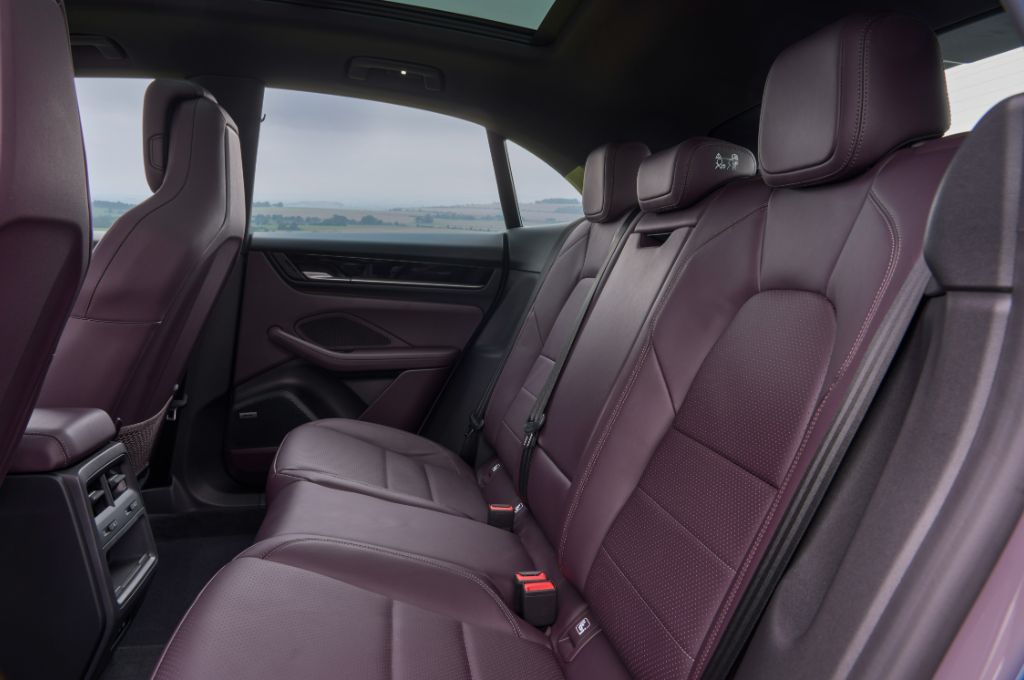
Running Costs and Pricing
The Porsche Macan 4 Electric is likely to be the biggest selling model in the range, and it's reasonably priced for what you're getting. But don’t expect the list price to be what you actually pay, as there are a huge array of options to choose from, and it’s quite easy to add thousands and thousands to the price in optional extras. That’s nothing new for Porsche, which is infamous for its options lists and - in its defence - know that its customers like to personalise their car, hence offering such a huge array of colours and equipment variations. Unless you're going for the Macan Turbo, which does get a pretty generous amount of kit included, expect to be adding a good few thousand to the brochure price before you've got the Macan you really want.
Insurance and tyres will be as expensive as you'd expect them to be on a rather powerful Porsche, so while charging the Macan Electric from a home charger will cost a lot less than fuelling the petrol Macan, this still isn't going to be a cheap car to run by the standards of electric family SUVs.
Verdict
It drives like a Porsche, feels like a Porsche, smells like a Porsche and, well, it’s a Porsche. And everything that you expect of that – and probably more thanks to the electric power, rather than less. Plus, it’s comfy and roomy, so will be a great family car.
It was pretty telling that, when we had the Macan up against the previous-generation Tesla Model Y in the UK, the Porsche still felt like it was worth the money - despite being so much more expensive than the Tesla. Just goes to show that being premium doesn't have to mean feeling overpriced. The Porsche Macan Electric is just fabulous, really. Not without flaws, but it's still our favourite premium electric SUV.
Want all the latest electric car news, reviews and videos? Sign up to the Electrifying newsletter, and don't forget to check out the Electrifying podcast.
Like the Porsche Macan Electric? Try these...





